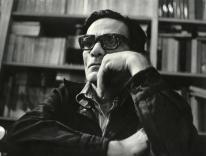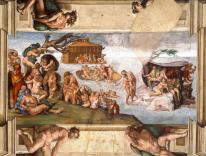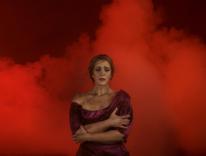Ten years ago, at the age of twenty-four, the African-American artist Kara Walker became the youngest person to win a MacArthur Fellowship (the so-called genius grant). She had burst on the scene three years before with a major wall piece at the Drawing Center in New York. Then something strange occurred. An older black artist, Betye Saar, who twenty-five years earlier had produced avant-garde assemblage art such as The Liberation of Aunt Jemima, began a letter-writing campaign to protest the collection and display of Walker’s work. “I am writing you,” said Saar, “seeking your help to spread awareness about the negative images produced by the young African-American artist Kara Walker.”
Saar questioned “the validity of a black person’s attempt to reclaim and reverse racist imagery through irony,” and described the art establishment’s embrace of Walker as “closet racism.” Another black artist, Thom Shaw, joined the protest, adding that Walker’s “works are obviously targeted at whites.” The controversy was generational but also had to do with the politics of post-civil-rights-era art by African Americans. It led to the 1998 public symposium, “Change the Joke and Slip the Yoke: A Harvard University Conference on Racist Imagery.” The controversy is not likely to be quelled by Walker’s fierce, shocking, but essential retrospective at the Whitney Museum of American Art in New York, “My Complement, My Enemy, My Oppressor, My Love” (through February 3).
The show opens with the piece that established Walker’s reputation, Gone, A Historical Romance of a Civil War as It Occurred Between the Dusky Thighs of One Young Negress and Her Heart. What first appears as a genteel pre–Civil War romance done in nostalgic eighteenth-century silhouette style quickly proves to be a ferocious depiction of sexual and social abuse of blacks in the antebellum South. (Don’t bring children.) As a young belle reaches up to kiss her gentleman caller, another pair of legs emerges from under her skirt. On an island in the center, a young black girl fellates a white boy, who seems more interested in the floating figure of a young black man born aloft by an inflated phallus. While dancing, a “pick-a-ninny” (Walker’s term) casually gives birth to two babies. A white gentleman assaults a black cleaning girl who coughs up a profile of a man who may be George Washington. The piece as a whole—sharp black silhouettes on a diorama-like white wall—is formally lyrical but emotionally lacerating.
Walker’s themes have much to do with her biography. Born in Stockton, California, in 1969, as a teenager she moved with her family to Atlanta, Georgia, where she encountered pronounced racism for the first time. After graduating from the Atlanta College of Art with a BFA in 1991, she pursued an MFA at the Rhode Island School of Design. It was there that she began to confront the roots of racial prejudice and oppression. Drawing on a broad range of disparate sources—the antebellum South, testimonial slave narratives, historical novels, minstrel shows, films, and her impressive command of art history—she has since produced paintings, drawings, collages, shadow-puppetry, light projections, and video animations. Her signature silhouettes remain the dominant form, racial and sexual abuse the principal subject. But she has also won critical admiration for her bold and inventive use of figuration and narrative.
Another major “narrative” at the Whitney is The End of Uncle Tom and the Grand Allegorical Tableau of Eva in Heaven (1995). Inspired by Harriet Beecher Stowe’s 1852 abolitionist novel, Uncle Tom’s Cabin; or, Life among the Lowly, the piece works like a nightmare bursting out of the book’s condescension. (Blacks were basically imagined as children.) The imagery is monstrous and grotesque, yet somehow strangely seductive. On the far right, Uncle Tom gives birth to a baby whose umbilical cord comes from his behind. In the center, a white girl in a hoop skirt runs wild with an axe. A dancing girl trails excrement. At the far left, three black women nurse each other. One might think of Celie and Shug in Alice Walker’s The Color Purple but without the happily resolved ending of that book. Kara Walker wants to face the horror to the end. For memories like this, there isn’t a way out. Her aim, in fact, is “for myself and my quintessential viewer to be trapped.”
Several galleries also show 16 mm films with naively produced puppet shows that deal with the pseudo “family romance” of plantation life, King Cotton as a culture, the emasculation (and feminization) of black males, and a slave rebellion. Here Walker’s manipulation of the figures reminds you of the films in which Alexander Calder delightedly presented his Circus to Parisian audiences in the late 1920s—except that Walker’s themes are socially scalding. There are also some handsome light projections, in particular Darkytown Rebellion (2001), with its central figure echoing Delacroix’s Liberty Leading the People. And 8 Possible Beginnings of: The Creation of African-America, a Moving Picture by Kara E. Walker (2005), shot in black-and-white film and video, comprises eight painful fantasies of the black experience that will make you cringe—while perhaps realizing, as a commentary by Henry Louis Gates Jr. says, that “we mutually constitute each other. There is no separate white culture, and no separate black culture.”
Sometimes Walker’s ambition gets the best of her. Her five-part installation, ...calling to me from the angry surface of some gray and threatening sea. I was transported, created this year for the Whitney show, seems repetitive and labored. But Walker is an unusually skillful draftswoman and can easily evoke Goya and Daumier at their best. A series of eight drawings done in 2003, a year after the invasion of Iraq and about the time of the Abu Ghraib abuses, vividly expresses her horror at the violence and degradation of the war, with brutal imagery that ranges from decapitation to people eating themselves alive. There is also an impressive nine-part work of collage on paper in which Walker explores the irrationality of sexual desire and racism by adding photographs and found texts to pages from Harper’s Pictorial History of the Civil War, first published in 1869.
The earliest silhouette in the show (from 1993–94), by now well-known, is a Siamese twin–like cut-out of a doubled female figure that recalls supposedly harmless entertainments such as carnivals, sideshows, and minstrelsy. Perhaps the most famous of all Walker’s images, though, is Cut (1998), which appears in the very last gallery. Here a dancing young woman leaps into the air with her arms flung high while beautiful, flower-like arabesques float above her. Only on closer inspection do you realize that her left hand holds a razor, that her wrists are slit, and that the lovely lines are jets of blood forming pools on the ground. In this autobiographical moment, resistance and resignation, art and mortality, the skill of cutting silhouettes and the cruel instrument used for them are imagined together indelibly. The young artist has placed herself, in effect, worthily in the company of Toni Morrison, whose Beloved also imagined death as preferable to slavery.
Roberta Smith has pointed out in the New York Times how remarkable it was, this past fall and early winter, that two major black artists were having retrospectives at two major New York museums—Kara Walker at the Whitney and Martin Puryear at the Museum of Modern Art. The two could scarcely be more different. Puryear, though well aware of racial strain in society, is a meditative, even contemplative abstract artist whose work evokes the archaic and essential. He challenges us with calm, inspires by suggesting aspiration. Walker, on the other hand, is embedded in the struggles of history and the moment (see her August 27, 2007, New Yorker cover, Post Katrina—Adrift, its silhouetted black figures a contemporary version of Géricault’s Raft of the Medusa). Walker’s work is layered with meaning: formal, social and sexual, art-historical. Her greatest strength is her ability to hold contradiction and conflict together in single images where no participant is privileged. Like Puryear in 1989, she has represented the United States at the International São Paulo Biennial in Brazil (2002). What future do her beautiful, disturbing images promise? Can imagining dead ends nevertheless lead to ways forward? Can knives heal as well as scar? These are among the troubling questions one is left with after seeing Walker’s powerful work to date. The exhibit travels next to UCLA’s Hammer Museum in Los Angeles.
Please email comments to [email protected] and join the conversation on our Facebook page.
Share
Previous Story
Reformer & Racialist
Next Story
Lost & Found


